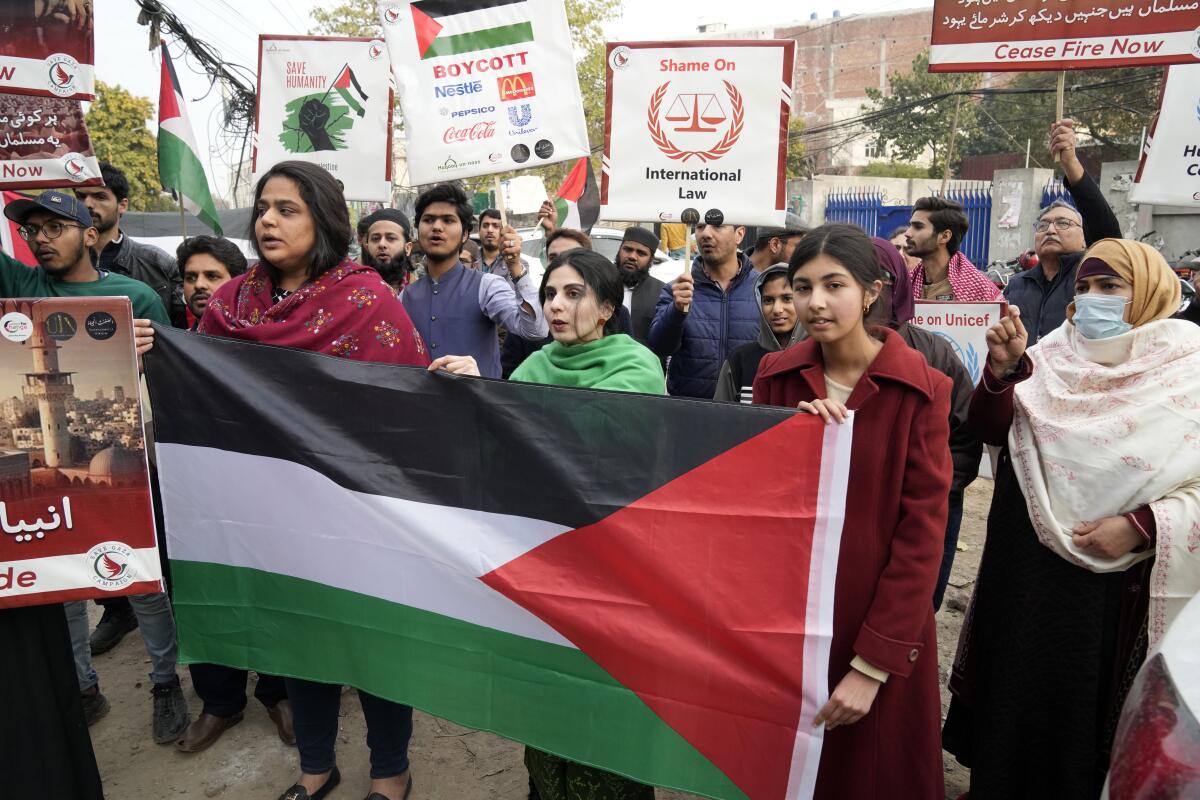
Hamas has begun to resurface in areas where Israel withdrew the bulk of its forces a month ago, deploying police officers and making salary payments to some of its civil servants in Gaza City in recent days, four residents and a senior official in the militant group said Saturday.
Signs of a Hamas resurgence in Gaza’s largest city underscore the group’s resilience despite Israel’s deadly air and ground campaign in the four months since the deadly Oct. 7 attack on Israel triggered the latest war. Israel says it’s determined to crush Hamas and prevent it from returning to power in Gaza, an enclave it has ruled since 2007.
In recent days, Israeli forces renewed strikes in the western and northwestern parts of Gaza City, including in areas where some of the salary distributions reportedly took place.
Four Gaza City residents told the Associated Press that in recent days, uniformed and plainclothes police officers deployed near police headquarters and other government offices, including near Shifa Hospital, the territory’s largest. The residents said they saw the return of civil servants and subsequent Israeli airstrikes near the makeshift offices.
The return of police marks an attempt to reinstate order in the devastated city after Israel withdrew a significant number of troops from northern Gaza last month, a Hamas official told AP, speaking on condition of anonymity because he was not authorized to talk to the media.
The official said the group’s leaders had given directions to reestablish order in parts of the north where Israeli forces had withdrawn, including by helping prevent the looting of shops and houses abandoned by residents who had heeded repeated Israeli evacuation orders and headed to southern Gaza.
Israel’s ground attacks reduced many homes and buildings to piles of rubble and dust, or left them half-standing.
Saeed Abdel-Bar, a resident of Gaza City, said a cousin received funds from a makeshift Hamas office that was set up to distribute $200 payouts to government employees, including police officers and municipal workers.
Since seizing control of Gaza nearly 17 years ago, Hamas has been operating a government bureaucracy with tens of thousands of civil servants, including teachers and police who operate separately from the group’s secretive military wing.
The partial salary payments for at least some government employees signal that Israel has not delivered a knockout blow to Hamas, even as it claims to have killed more than 9,000 Hamas fighters.
Ahmed Abu Hadrous, a Gaza City resident, said Israeli warplanes struck the area where the makeshift office is multiple times earlier this week, including Saturday.
The strikes come roughly a month after Israeli military leaders said they had broken up the command structure of Hamas battalions in the north, but that individual fighters were continuing to carry out guerrilla-style attacks.
Meanwhile, combat continued in southern Gaza.
At least 11 people were injured when Israel’s military fired smoke bombs at displaced people sheltering at the headquarters of the Palestinian Red Crescent in the southern city of Khan Yunis, the organization said. It followed a siege that Israel’s military has laid on the Red Crescent’s facilities for 12 days, the organization said.
The charity said it had documented the killing of 43 people, including three staff members, inside the buildings by Israeli fire in those 12 days, with 153 others injured.
Israel’s military denied the Red Crescent’s allegations that the Al
Amal Hospital facilities had stopped functioning, saying the hospital had adequate fuel and electricity and that the military helped to replenish two oxygen tanks.
The military said operations in Khan Yunis would continue for several days.
At least 17 people, including women and children, were killed in two separate airstrikes overnight in Gaza’s southernmost town of Rafah on the border with Egypt, according to the registration office at Abu Yousef al Najjar hospital, where the bodies were taken.
The first strike hit a residential building east of Rafah, killing at least 13 people from the Hijazi family. The dead included four women and three children, hospital officials said.
“Two children are still under the rubble, and we don’t, still we don’t know anything about them,” relative Ahmad Hijazi said.
The second struck a house in Rafah’s Jeneina area, killing at least two men and two women from the Hams family.
The Health Ministry in Gaza said Saturday that 107 people were killed over the last 24 hours, bringing the wartime total to 27,238. More than 66,000 people have been wounded.
The conflict has leveled vast swaths of the tiny coastal enclave, displaced 85% of its population and pushed a quarter of residents to starvation.
More than half of Gaza’s population of 2.3 million has taken refuge in Rafah and surrounding areas. A United Nations official on Friday said Rafah was becoming a “pressure cooker of despair.”
Israel’s defense minister warned earlier in the week that Israel might expand combat to Rafah after focusing on Khan Yunis, the largest city in southern Gaza. While the statement alarmed aid officials and international diplomats, Israel would risk significantly disrupting strategic relationships with the United States and Egypt if it were to send troops into Rafah, a key entry point for aid.
International mediators continued to work to close wide gaps between Israel and Hamas over a proposed cease-fire deal.
Hamas continues to hold dozens of the roughly 250 hostages taken in the Oct. 7 attack, after more than 100 were released during a one-week truce in November. Those releases were in exchange for 240 Palestinian prisoners.
Meanwhile, the United States — which has negotiated parts of the deal along with Israel, Egypt and Qatar — launched an air assault on dozens of sites in Iraq and Syria used by Iranian-backed militias and the Iranian Revolutionary Guard late Friday, in the opening salvo of retaliation for the drone strike that killed three U.S. troops in Jordan last weekend.
Magdy reported from Cairo. Associated Press writers Julia Frankel in Jerusalem and Jamey Keaten in Geneva contributed to this report.